Plenary Talks
2nd Hans Liebe Lecture on Microwave and Optical Spectroscopy
Extending operational satellite cloud remote sensing into the submillimeter range: The challenge of supercooled liquid water absorption
Monday, July 20, 12:10-13:10
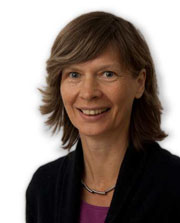
Susanne Crewell
Clouds are an essential part of the climate system determining the distribution of water and energy. Despite their importance their prediction via weather and climate models remains problematic. Upcoming spaceborne observations are envisioned to provide new insights into global cloud characteristics for climate studies and to improve numerical weather prediction via data assimilation. Specifically, the future Eumetsat Polar System – Second Generation (EPS-SG) to be operated within the 2020–2040 time frame will include three passive microwave instruments for enhanced cloud observations. In particular the Ice Cloud Imager (ICI) with eleven channels between 183 and 664 GHz will for the first time exploit submillmeter wave frequencies for operational ice cloud imaging. Furthermore, ICI will target the vertical humidity profile and information on hydrometeors (cloud ice, graupel, snow, rain and cloud liquid). It should be noted that ICI measures at both V and H polarisation with two window channels (243 GHz and 664 GHz) that provide additional insight on hydrometeor scattering.
In order to retrieve cloud properties like ice / snow water path, cloud ice effective radius, cloud altitude and further hydrometeor information from (sub-) millimeter measurements the scattering signal by ice particles that increases with increasing frequency is exploited. However, also water vapor and liquid water absorption increase with frequency and the observed brightness temperatures strongly depend on the vertical structure and composition of clouds. Frequently, layers of supercooled liquid are embedded in or found on top of ice clouds. Xie et al. (2015) could show that the stratification of absorbing (vapor, liquid) and scattering (ice/snow) layers changes both brightness temperatures and polarization difference and that accurate information on liquid water is required to correctly interpret the polarimetric observations.
Microwave radiometers are the basic observational tools used to measure liquid water path (LWP). However, a large fraction of liquid-bearing clouds are supercooled (i.e., Tcloud < 0°C) and only very few laboratory observations of liquid water absorption coefficient in microwave at supercooled temperatures are available. Consequentially, microwave absorption models use semi-empirical models that are derived from laboratory measurements at warm temperatures and extrapolated to supercooled temperatures. Therefore it is not surprising that different models for the complex permittivity of liquid water – among them the frequently used model by Liebe et al. 1991 – differ significantly in particular at higher frequencies leading to uncertainties of up to 80% in LWP (Kneifel et al., 2014).
This lecture will introduce the upcoming ice cloud mission to be launched in 2021 and illustrate the challenges in retrieving cloud parameters from polarimetric measurements up to 664 GHz. In particular the impact of supercooled liquid water will be discussed and new developments to model liquid water absorption based on field observations and older laboratory data will be presented.
Biography
Prof. Dr. Susanne Crewell holds the professorship for Meteorology at the Institute for Geophysics and Meteorology and is of the Albertus Magnus Graduate Center of the University of Cologne. Her research is directed on a better understanding of the atmospheric water cycle by exploiting novel observation techniques from space, aircraft and ground and to bridge observations and modeling on different scales.
She obtained her doctorate in 1994 in Environmental Physics at the University of Bremen, Germany. Afterwards she worked as a post‐doc at the State University of New York, Stony Brook, and University of Bonn. In 2004, she has been appointed Professor of Experimental Meteorology at the University of Munich.
Since 2006, Prof. Dr. Susanne Crewell established the Jülich ObservatorY for Cloud Evolution (JOYCE) as a member of the University of Cologne. JOYCE is dedicated to the observation of cloud formation and cloud transformation. Further, she is a spokeswoman of Cologne’s scientists in the DFG‐funded collaborative research center TR32 “Patterns in Soil‐Vegetation‐Atmosphere‐Systems“ of the Universities of Bonn, Aachen, Cologne and the Research Center Jülich. She also coordinates the Marie‐Curie project “Initial Training for atmospheric Remote Sensing“ (ITaRS), a consortium of 19 partners funded by the 7th European Research Framework Program. Moreover, Crewell initiated a range of national and international projects optimizing efficiency and exploring the use of remote sensing for weather forecast and climate modeling.
Susanne Crewell is elected member in a range of committees including the Academy of Sciences, Humanities and the Arts North Rhine Westphalia, the Joint ESA‐Eumetsat Microwave Imager & Ice Cloud Imager Science Advisory Group, the Senate Commission of the Helmholtz Association and the Review Board for Atmospheric Science and Oceanography of the National Science Foundation DFG.
About the Hans Liebe Lectureship:
The U.S. National Committee (USNC) of the Union of Radio Scientists Internationale (URSI), with the support of the Liebe family, has established the Hans Liebe Lectureship in microwave and optical spectroscopy as applied to radio science, remote sensing and telecommunications. This lectureship provides travel support and an honorarium for a distinguished member of the radio science community to deliver a lecture on the professional topic of their interest at each of the annual USNC URSI Radio Science meetings.
Æthereal Waves Make History
The four scientists who saved James Clerk Maxwell’s theories
Tuesday, July 21, 11:50-12:30
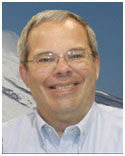
By James C. Rautio
President & CEO of Sonnet Software
Maxwell first published what came to be called “Maxwell’s equations” in 1865. However, it was not until 1888, and Heinrich Hertz’s experimental validation that Maxwell’s equations were widely accepted as correct. The story of the intervening 23 years is little known. Maxwell, who died in 1879, was exceptionally modest and did not promote his own results at any time. The survival of Maxwell’s equations was up to the only three researchers in the entire world who paid serious attention to Maxwell’s paper in 1865, and his seminal Treatise in 1873: Oliver Heaviside, Oliver Lodge, and George Francis FitzGerald. Later, Hertz joined the group forming “The Four Maxwellians”. This presentation describes the torturous 23 year path Maxwell’s equations took from their creation to their initial acceptance. No mathematical knowledge is needed; this presentation is ideal for a general audience.
Biography
James C. Rautio (S’77–M’78–SM’91–F’00) received the B.S.E.E. degree from Cornell University, Ithaca, NY, in 1978, the M.S. degree in systems engineering from the University of Pennsylvania, Philadelphia, in 1982, and the Ph.D. degree in electrical engineering from Syracuse University, Syracuse, NY, in 1986.
From 1978 to 1986, he was with General Electric, initially with the Valley Forge Space Division, then with the Syracuse Electronics Laboratory. During this time, he developed microwave design and measurement software and designed microwave circuits on alumina and on GaAs. From 1986 to 1988, he was a Visiting Professor with Syracuse University and Cornell University. In 1988, he joined Sonnet Software, Liverpool, NY, full time, a company he had founded in 1983. In 1995, Sonnet Software was listed on the Inc. 500 list of the fastest growing privately held U.S. companies, the first microwave software company ever to be so listed. Today, Sonnet Software is the leading vendor of high accuracy three-dimensional planar high-frequency electromagnetic analysis software.
Dr. Rautio was the recipient of the 2001 IEEE Microwave Theory and Techniques Society (IEEE MTT-S) Microwave Application Award and the 2014 IEEE MTT Distinguished Service Award. He was appointed MTT Distinguished Microwave Lecturer for 2005 – 2007 lecturing on the life of James Clerk Maxwell. His efforts have also resulted in the preservation and restoration of Glenlair, Maxwell’s home.
Molding Waves at Will
Wednesday, July 22, 11:50-12:30
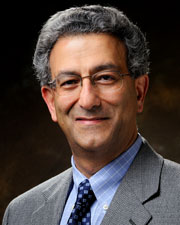
Nader Engheta
University of Pennsylvania
Philadelphia, PA, USA
Existence of electromagnetic waves was predicted by James Clerk Maxwell in his celebrated paper “A dynamical theory of the electromagnetic field” published in the Philosophical Transactions of the Royal Society of London, Vol. 155, pp. 459-512 (1865). Over the past 150 years, there have been amazing amounts of scientific progress and technological development originated from the Maxwell equations. Tailoring and manipulating such waves and fields has been at the heart of many of the scientific and engineering innovations in the 19th, 20th, and 21st centuries. And the journey continues.
One of the efficient ways to control and tame electromagnetic fields and waves is by materials. Through the past many decades, scientists and engineers have offered ideas for using materials, both “natural” as well as “engineered” media, to exploit such controls over the waves in order to design functional devices and components. With the advent of science of the nanometer scales and the state-of-the-art nanofabrication, in recent years it has become possible to construct structures much smaller than the wavelengths of visible lights, thus ushering a vast amount of unprecedented possibilities and novel opportunities for nanoscale functional structures. Metamaterials and nanomaterials are now made with the atomic precision, and this provides ample opportunities for molding the fields and waves at the nanoscale with desired functionalities at will. At such subwavelength scales, quantum aspects of light-matter interaction need to be taken into account, and thus quantum electrodynamical features of nanomaterials, exploited towards future quantum engineering devices, become a fertile field to be explored.
In this talk, we will give an overview of how over the years, and particularly in recent years, materials have played important roles in molding the fields and waves, and will forecast some of the future possibilities for the years to come.
Biography
Nader Engheta is the H. Nedwill Ramsey Professor at the University of Pennsylvania in Philadelphia, with affiliations in the Departments of Electrical and Systems Engineering, Physics and Astronomy, Bioengineering, and Materials Science and Engineering. He received his B.S. degree from the University of Tehran, and his M.S and Ph.D. degrees from Caltech. Selected as one of the Scientific American Magazine 50 Leaders in Science and Technology in 2006 for developing the concept of optical lumped nanocircuits, he is a Guggenheim Fellow, an IEEE Third Millennium Medalist, a Fellow of IEEE, American Physical Society (APS), Optical Society of America (OSA), American Association for the Advancement of Science (AAAS), SPIE, and Materials Research Society (MRS), and the recipient of several awards for his research including 2015 Gold Medal from SPIE (International Society for Optics and Photonics), 2014 Balthasar van der Pol Gold Medal from the International Union of Radio Science (URSI), 2013 Benjamin Franklin Key Award, 2013 Inaugural SINA Award in Engineering, 2012 IEEE Electromagnetics Award, 2008 George H. Heilmeier Award for Excellence in Research, the Fulbright Naples Chair Award, NSF Presidential Young Investigator award, the UPS Foundation Distinguished Educator term Chair, and several teaching awards including the Christian F. and Mary R. Lindback Foundation Award, S. Reid Warren, Jr. Award and W. M. Keck Foundation Award. His current research activities span a broad range of areas including nanophotonics, metamaterials, nano-scale optics, graphene optics, imaging and sensing inspired by eyes of animal species, optical nanoengineering, microwave and optical antennas, and engineering and physics of fields and waves. He has co-edited (with R. W. Ziolkowski) the book entitled “Metamaterials: Physics and Engineering Explorations” by Wiley-IEEE Press, 2006. He was the Chair of the Gordon Research Conference on Plasmonics in June 2012.
Sesquicentennial Year of Maxwell’s Equations and Electromagnetics
Thursday, July 23, 11:50-12:30
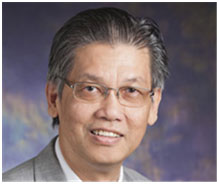
W.C. Chew
Department of Electrical and Computer Engineering
University of Illinois, Urbana-Champaign, USA
At the 150th year of Maxwell’s equations, they continue to be impactful. Electromagnetics and Maxwell’s equations have been instrumental in the conception of many electrical engineering and optical technologies. It the beginning, it was telegraphy, and rotating machineries. Over the years, Maxwell’s equations have given rise to wireless communications, antennas, radar, masers, optics, and photonics.
The amazing feature of Maxwell’s equations is that they are valid from subatomic length scale to galactic length scale. They are also valid over a vast frequency range where the wavelength could be very long as well as being very short. Furthermore, they are also valid in classical electromagnetics as well as in quantum electromagnetics. The validity of electromagnetic theory has been tested at many different length scales in several parts per billion. As a result, electromagnetic theory has impacted a whole sleuth of technologies in electrical engineering, optics, photonics, as well as in material science.
Because of the highly predictive value of Maxwell’s equations, there has been always a quest for their accurate solutions. Various methods to solve Maxwell’s equations have been developed since the dawn of their discovery. With the advent of computers, the need for more accurate and robust solutions does not diminish, but indeed increases. These accurate solution providers work in synergy with designers and experimenters to develop new technologies. We will also discuss future directions in this area.
Biography
Prof. Chew's research area is computational electromagnetics and fast computational algorithms for solving electromagnetic scattering and multiphysics problems. His recent research interest is in adding modern physics and multi-physics concepts to computational works. This includes developing models for solar cells, nano-electronics, quantum transport, and Casimir force. He also studies computational methods to solve the multi-scale problem in computer chip and circuit design. He works with the Area of Excellence Project at The University of Hong Kong on "Theory, Modeling, and Simulation of Emerging Electronics".
His past areas of research interest have been in wave propagation, scattering, inverse scattering, complex boundary value problems for microstrip circuits, and inhomogeneous media for geophysical subsurface sensing, nondestructive testing applications. Previously, he has designed experiments with his graduate students to demonstrate the super-resolution phenomena of nonlinear inverse scattering. Working with his group and NCSA in year 2004, they have solved record-size electromagnetic scattering problems with 20 million unknowns using fast algorithms and matrix-free methods. He is the originator of several fast algorithms for solving electromagnetics scattering and inverse problems, and has authored a book, Waves and Fields in Inhomogeneous Media, and coauthored two books, Fast and Efficient Algorithms in Computational Electromagnetics and Integral Equation Methods for Electromagnetic and Elastic Waves, in addition to more than 300 scientific journal articles and 400 conference papers, several patents, book chapters, and many lecture notes.
Prof. Chew is a Fellow of IEEE, OSA, IOP, and HKIE. He was named an NSF Presidential Young Investigator in 1986. Previously, he was the director of the Center for Computational Electromagnetics and the Electromagnetics Laboratory. He was a Founder Professor (2000-2005) of Engineering, YT Lo Chair Professor (2005-2010) of Electrical and Computer Engineering. More recently (2013), he was named the George and Ann Fisher Distinguished Professor of Engineering.
He was the co-winner of the Schelkunoff Best Paper Award for 2001. In 2002, ISI Citation elected him to the category of Most-Highly Cited Authors. His work is cited by electromagneticists, geophysicists, mathematicians, and electro-chemists.
Before coming to University of Illinois, Prof. Chew was a department manager and program leader at Schlumberger-Doll Research. He was on special leave to serve as the Dean of Engineering at The University of Hong Kong from 2007 to 2011. He also served on the Board of the Applied Science and Technology Research Institute in Hong Kong during the period. He serves as the Editor-in-Chief of the Progress in Electromagnetics Research, and helps organize the Progress in Electromagnetics Research Symposia. He was elected to the National Academy of Engineering in 2013. He is active in international collaborations.
Planetary Discoveries with Radio Science from Mariner to New Horizons
Friday, July 24, 11:50-12:30
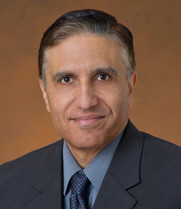
Sami W. Asmar
NASA Jet Propulsion Laboratory
California Institute of Technology, California, USA
The radio communications links between spacecraft and ground stations are altered in their characteristics between the times of transmission and reception. The Doppler shift resulting from perturbations in spacecraft motion due to gravitational and non-gravitational forces, relativistic effects, as well as propagation effects in the proximity of planetary atmosphere, rings, solar corona, and interplanetary plasma are carefully examined by Radio Scientists for important physical phenomena. From the early Mariner missions five decades ago to the latest New Horizons encounter with Pluto/Charon, planetary interiors, atmospheres, surfaces, and rings have been investigated and characterized, along with precision measurements exploring the sun and aspects of fundamental physics. We report on discoveries made via planetary spacecraft Radio Science techniques with NASA and international missions and the Deep Space Network. The technological evolution is outlined leading to the latest uplink radio occultations as well as future concepts.
Biography
Sami W. Asmar is a Physicist and Radio Science specialist and the manager of strategic and international planning and architecture for the Interplanetary Network Directorate at NASA’s Jet Propulsion Laboratory, California Institute of Technology. Among his awards are three NASA Exceptional Achievement Medals. He has been the project scientist for the GRAIL lunar mission and collaborator on the New Horizons Radio Science experiment.